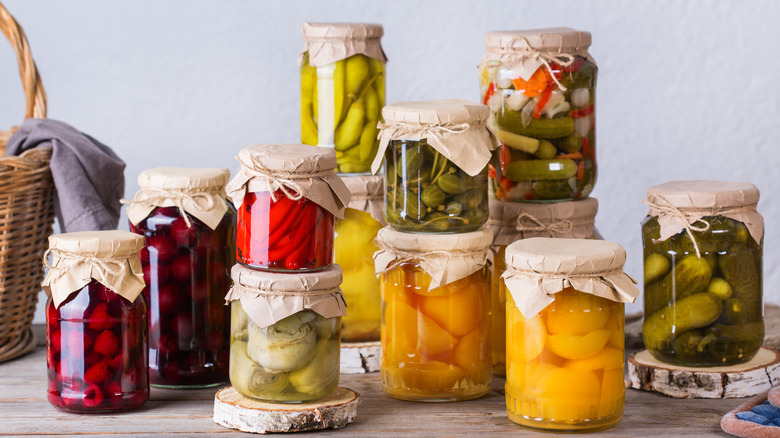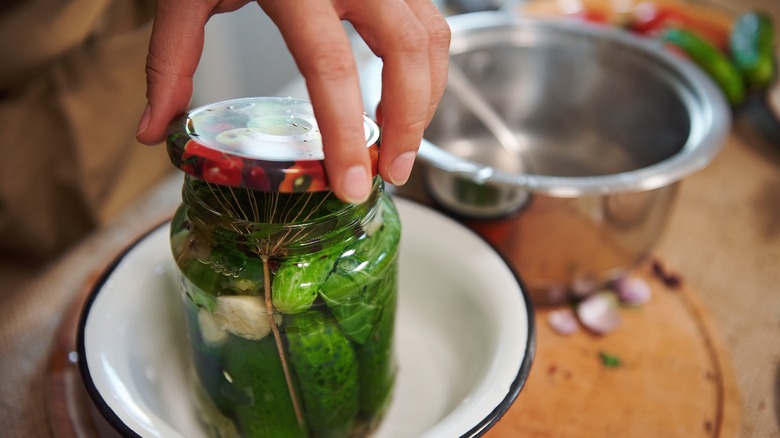The Biggest Mistake To Avoid When Canning Your Own Food
With the cost of food, tossing out food is hard to stomach, but no matter how carefully you shop and cook, it's easy to find yourself dealing with more fresh fruit and vegetables than you can eat before they go bad. A tactic to cut down on waste and save money is to can your excess fruits and veggies, according to The Penny Hoarder.
Canning can save you money by allowing you to enjoy out-of-season food at in-season prices or by buying it on sale and preserving it for later, per The Penny Hoarder. As a person who gets creative to save money, The Frugal Navy Wife says that while the startup costs for canning can get a bit expensive, you can often reuse some of the items (the jars in particular), and you can even find them at thrift stores at a reduced price. In addition, there are a few other key items you will need, such as screw bands and canning lids, a water-bath canner, a jar lifter, funnels, and a few other items, according to Better Homes & Gardens.
While canning can take some extra effort and some upfront costs, it's well worth it, according to The Frugal Navy Wife, who says it provides her with a stocked pantry of homemade or homegrown foods, provides easy access to fruits and vegetables, and gives you comfort knowing exactly what is in the food you eat.
A small mistake can lead to big problems
After filling your jar with homemade pickles or recently harvested tomatoes, it's tempting to turn the screw band on really tight to make sure the contents don't leak out, but that is one of the biggest mistakes a home canner can make (via Clemson University Cooperative Extension Service). By having a lid on too tightly when processing the jar, the air is trapped inside the jar, which could mean the jars do not seal properly — or could even explode. Air should be able to leave the jar as it is sealed.
When screwing the lid on a jar, Christina Ward, author of "Preservation: The Art and Science of Canning, Fermentation and Dehydration," says to turn it until the band catches. This technique is called "finger-tightening" and allows some of the air inside the jar to escape. Ward says that the vacuum created in the jar during the canning process will naturally seal the jar of food against outside contaminants. After sealing your jars, if any one of them has a swollen lid, contains mold, leaks, or the contents don't have a good appearance, toss it out for your safety, advises Better Homes & Gardens.
With a few tools, some fresh fruits and vegetables, and a little know-how, canning produce can be a way to help you save money and gain a sense of accomplishment.

